To grow a Dwarf Cavendish Banana Tree, provide it with ample sunlight, regular watering, and warm temperatures, preferably above 60°F.
Have you been dreaming of having your own fresh, home-grown fruit? Look no further than the Dwarf Cavendish Banana Tree! With some easy care tips, you can cultivate this beautiful and flavorful tree right in your own home.
No products found.
Understanding the Dwarf Cavendish Banana Tree
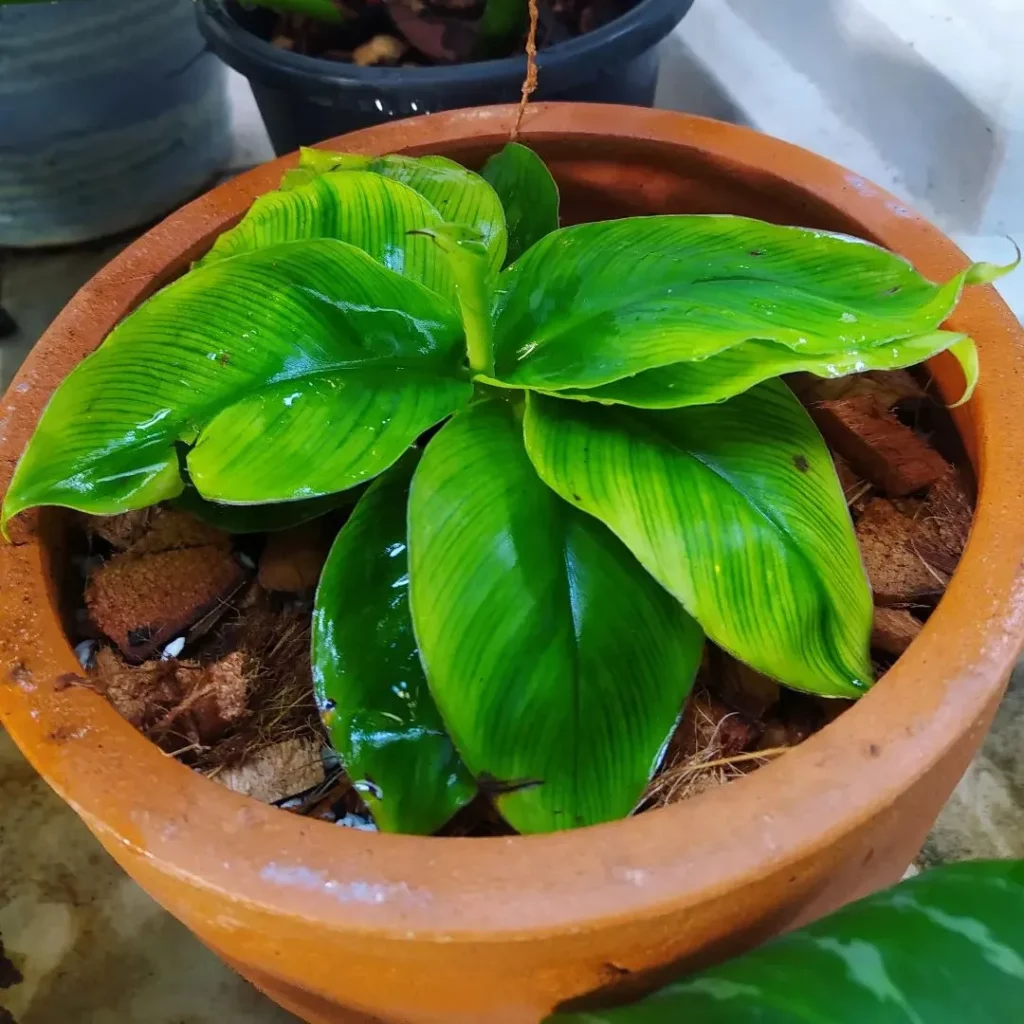
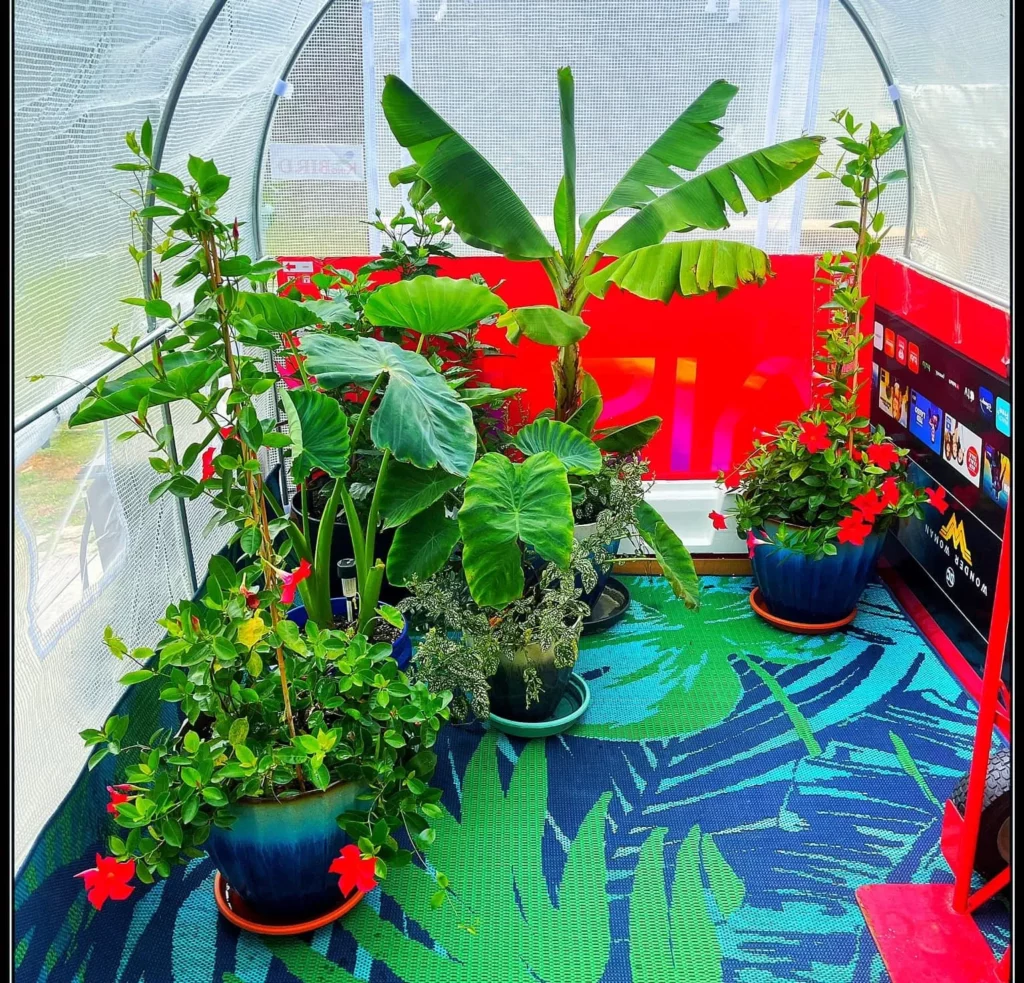
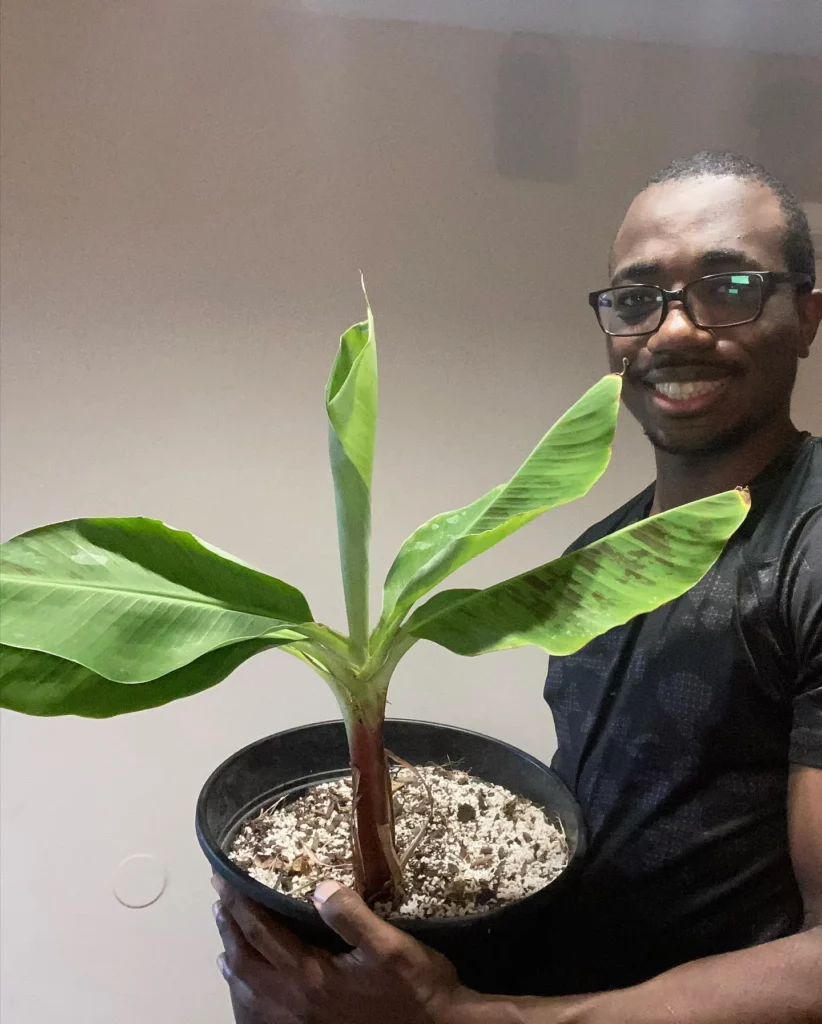
The Dwarf Cavendish Banana Tree is a tropical plant that produces edible fruit and is also prized for its ornamental appeal. As the name suggests, it is a dwarf variety, growing up to a maximum height of 6-8 feet, making it suitable for indoor cultivation, and outdoor growing in warmer climates.
The plant’s leaves are large and glossy, with a deep green color. They usually grow to 2-3 feet in length and 1-2 feet in width, forming a dense canopy that provides shade and shelter to the fruit bunches. The fruits themselves are yellow, elongated, and slightly curved, with a sweet flavor and creamy texture. They can reach up to 6-9 inches in length and are generally harvested when they are still green, ripening off the tree.
No products found.
One of the most attractive features of the Dwarf Cavendish Banana Tree is its ability to produce multiple stems or suckers, which form dense clumps of plants that resemble a small grove or a tropical paradise. These plants are easy to grow and care for, requiring minimal maintenance once established.
Light Requirements for Dwarf Cavendish Banana Tree

Like all plants, the Dwarf Cavendish Banana Tree requires adequate light to thrive. When it comes to this tropical plant, it’s important to strike the right balance between too little and too much light.
No products found.
For optimal growth, the Dwarf Cavendish Banana Tree needs bright, indirect light for 12-14 hours a day. This can be achieved with a south- or west-facing window that lets in plenty of sunlight but doesn’t expose the plant to direct rays, which can scorch the leaves.
No products found.
If natural light is not available, you can use fluorescent or LED lights to supplement it. Choose a light bulb that emits blue and red light, as these wavelengths are important for plant growth. Keep the light on for 12-14 hours a day and adjust the distance between the bulb and the plant to avoid burning the leaves.
Watering the Dwarf Cavendish Banana Tree

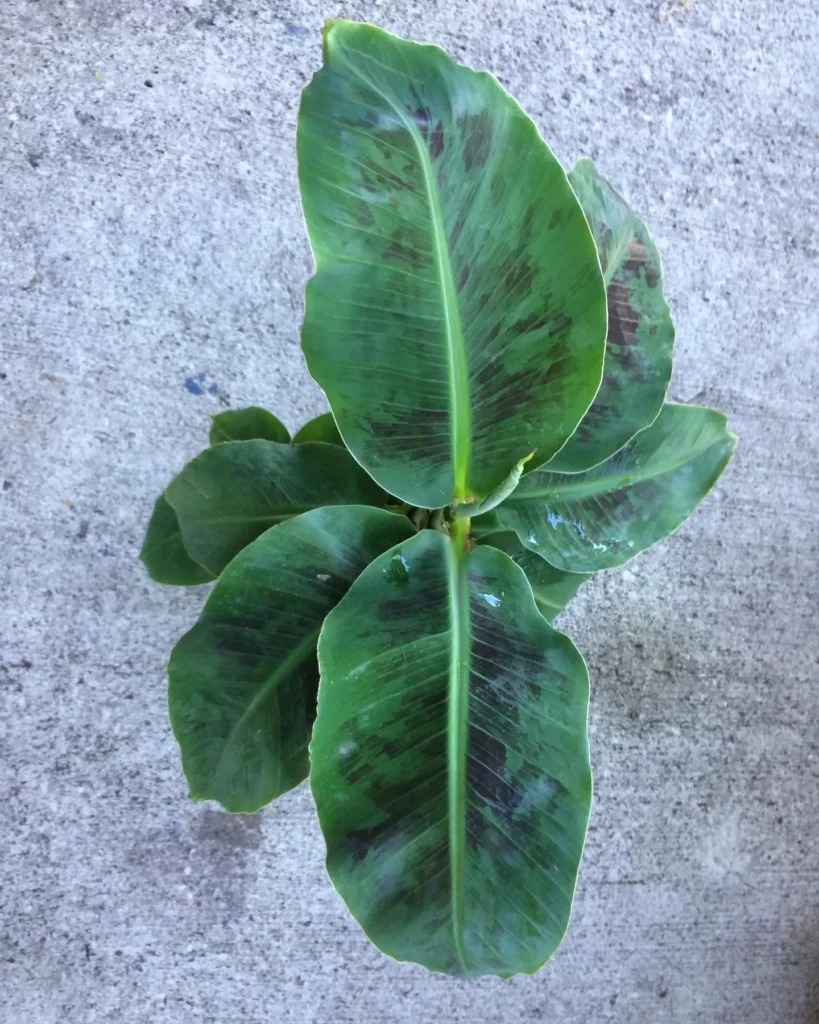

Proper watering is crucial for the health and well-being of your Dwarf Cavendish Banana Tree. Young trees require frequent watering and you should ensure the soil is constantly moist but not waterlogged. As your tree grows, adjust the watering schedule in accordance with its requirements, which will vary based on temperature, humidity levels, and pot size.
The key is to maintain an ideal moisture balance in the root zone to facilitate the optimal uptake of nutrients and hydration. Too little water and the plant will wilt, while too much water can lead to root rot and other issues.
No products found.
When watering your Dwarf Cavendish Banana Tree, make sure to saturate the soil fully, allowing the excess to drain out. Avoid letting the plant stand in a saucer filled with water as this can lead to stagnant moisture and root problems.
Consider using a moisture meter to measure the moisture level in the soil and ensure it remains within the optimal range, usually between 4 to 6 on the scale.
Fertilizing the Dwarf Cavendish Banana Tree

Fertilizing is essential to ensure the healthy growth and development of your Dwarf Cavendish Banana Tree. The appropriate fertilizers, application techniques, and fertilization schedule can promote optimal fruit production and overall plant vigor.
The best fertilizers for Dwarf Cavendish Banana Trees are those with high levels of nitrogen, phosphorus, and potassium. Consider using a balanced fertilizer, such as a 10-10-10 or a 14-14-14 mixture, to ensure your plant receives adequate nutrients.
No products found.
It’s important to apply fertilizer to your Dwarf Cavendish Banana Tree every 6-8 weeks during the growing season, which is typically from spring to fall. Avoid fertilizing during the winter months, as this can harm your plant.
When applying fertilizer, be sure to spread it evenly around the base of the plant. You may also consider adding some to the soil when repotting your plant.
Finally, always follow the manufacturer’s instructions when using fertilizers. Over-fertilization can damage the roots and leaves of your Dwarf Cavendish Banana Tree and reduce fruit production.
Potting the Dwarf Cavendish Banana Tree

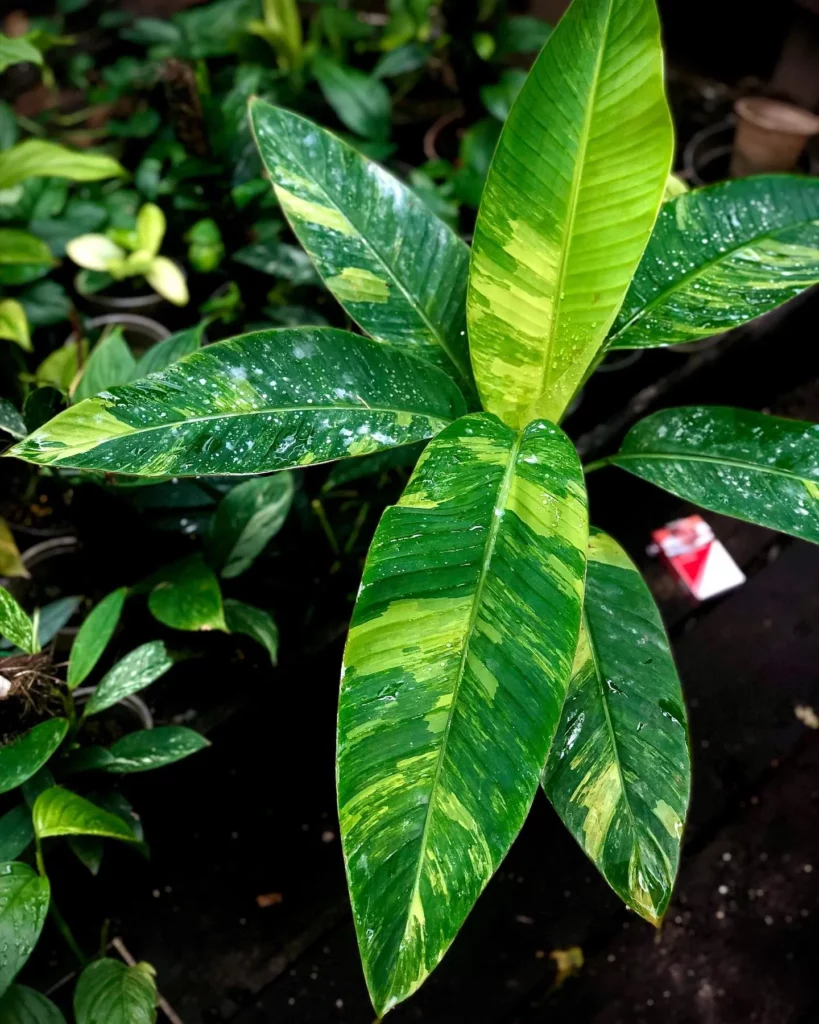
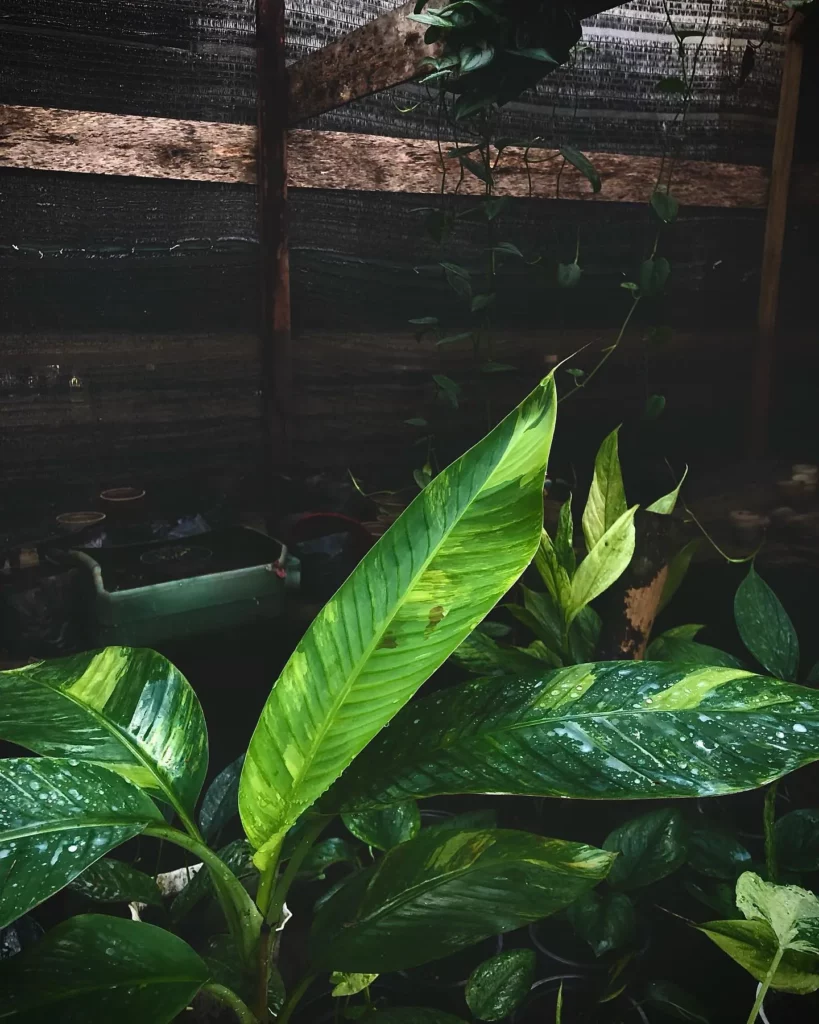
When it comes to growing a healthy Dwarf Cavendish Banana Tree, choosing the right pot and potting mix is essential. The pot size should be appropriate for the plant’s size and should have good drainage holes to prevent waterlogging.
A pot that is too large can lead to excess moisture, which can cause root rot and hamper growth. A potting mix that is well-draining, nutrient-rich, and slightly acidic is ideal for the Dwarf Cavendish Banana Tree.
To prepare the pot, add a layer of gravel or broken pottery at the bottom to enhance drainage. Then, fill the pot halfway with the potting mix and place the plant in the center.
Next, fill the rest of the pot with the potting mix, leaving about an inch of space from the top. Firmly press the mix around the plant to remove any air pockets.
Finally, water the plant well and place it in a location that receives bright light or partial shade, depending on the plant’s requirements.
Periodically check the pot to ensure that it drains well and has the right moisture level. If the plant becomes root-bound, it’s time to repot it. Gently remove the plant from the pot, loosen the root ball, and trim off any damaged or rotting roots.
Then, repeat the potting process with a slightly larger pot and fresh potting mix. This will provide your Dwarf Cavendish Banana Tree with ample space and nutrients to continue thriving.
Propagation of the Dwarf Cavendish Banana Tree
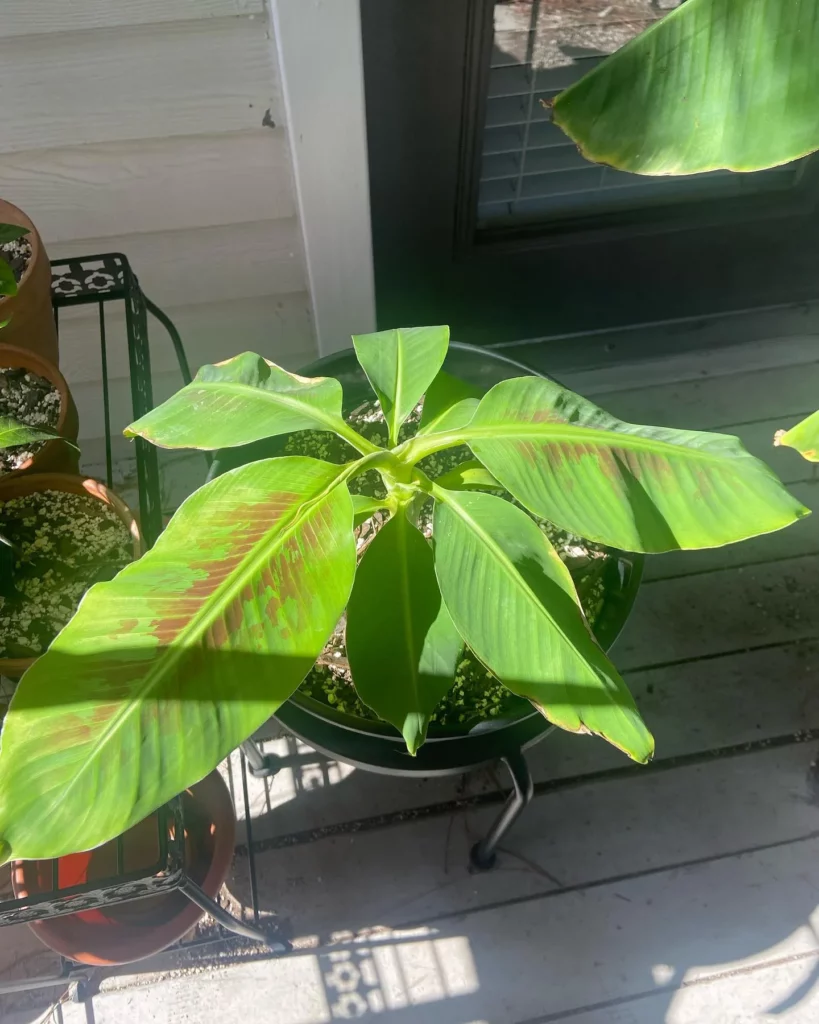
One of the best things about growing a Dwarf Cavendish Banana Tree is the opportunity to propagate it and share its beauty and fruit with others. There are two primary methods for propagating your plant:
- Suckers: These are small sprouts that grow from the rhizomes or underground stems of the parent plant. To propagate using suckers, wait until they are at least 6 inches tall and have their own set of roots before cutting them from the parent plant. Use a sharp, clean tool and make a clean cut to avoid damaging the sucker or the parent plant. Plant the sucker in a pot of moist, well-draining soil and keep it warm and shaded until it establishes roots.
- Tissue culture: This is a more advanced and controlled method of propagation, typically done in a laboratory or specialized facility. It involves taking a small sample of plant tissue and growing it in a sterile environment with specific nutrients and hormones to encourage growth and root development. Tissue culture can produce large numbers of identical plants, making it ideal for commercial growers or those seeking to propagate a large number of plants.
Growth and Development of the Dwarf Cavendish Banana Tree
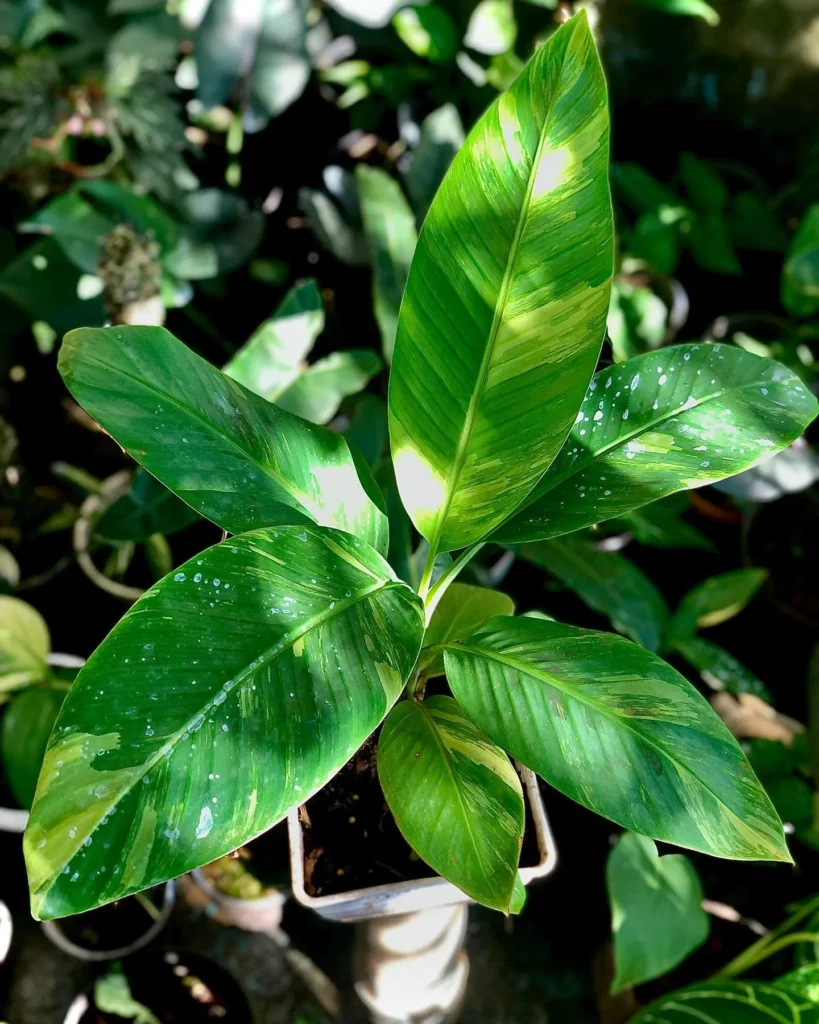
The Dwarf Cavendish Banana Tree undergoes several growth stages throughout its lifespan. Knowing these stages can help you understand the nutritional, water, and light requirements for each phase, and provide optimal care for your plant.
The developmental stages of the Dwarf Cavendish Banana Tree are:
- Germination – This phase involves the sprouting of the seed. This stage is influenced by adequate moisture and temperatures around 75-85℉.
- Seedling – A strong root system and initial growth of the stem and leaves are established during this stage. Provide adequate moisture, fertilizer, and moderate light around 13-16 hours per day.
- Vegetative Stage – This stage is characterized by rapid stem and leaf growth, with minimal to no flower production. At this phase, the plant requires ample water, moderate fertilizers, and optimal lighting around 14-16 hours per day.
- Flowering – During this stage, the plant produces the first set of fruit, which gradually grows in size. The plant needs more water and potassium-based fertilizers to promote fruit growth. Lowering light duration to 12-14 hours per day promotes flower initiation.
- Fruit Development – In this stage, the fruit matures and fills out. Specifically, in Dwarf Cavendish Bananas, they turn from green to yellow. Furthermore, the leaves start to die, and plant growth slows down. Provide moderate to high light and ample potassium-based fertilizer to promote nutrient regulation.
Managing Pests and Diseases for a Healthy Dwarf Cavendish Banana Tree
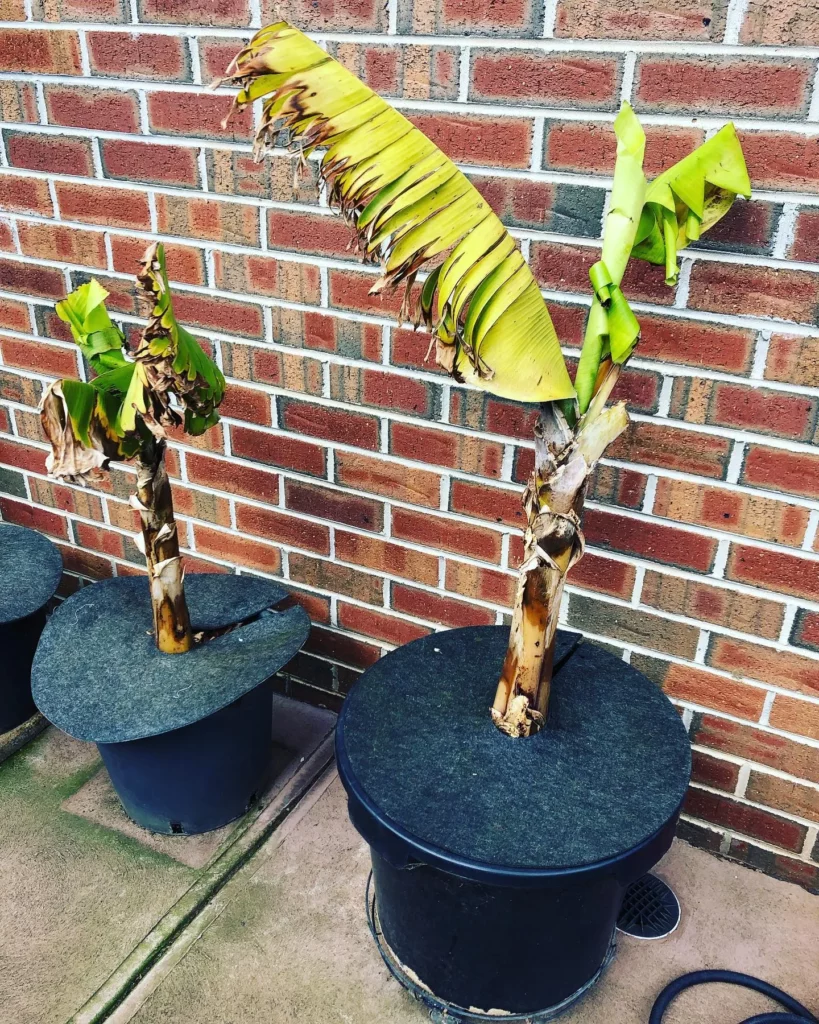
Although the Dwarf Cavendish Banana Tree is generally easy to care for, it is still vulnerable to pests and diseases that can compromise its growth and fruit production. Here are some of the most common issues you might encounter:
- Fruit flies – These tiny pests can infest your bananas, causing them to rot and fall prematurely. To prevent fruit flies, keep your plant clean and remove any fallen or damaged fruit. You can also use yellow sticky traps to catch them.
- Spider mites – These pests can cause yellowing and withering of the leaves, as well as the formation of webbing. To control spider mites, wash the leaves with a mixture of water and soap, or use an organic insecticide containing neem oil.
- Crown rot – This fungal disease can affect the base of the stem and cause the plant to wilt and die. To prevent crown rot, avoid overwatering and ensure proper drainage. If your plant is infected, remove the affected parts and treat the remaining ones with a fungicide.
No products found.
Other diseases and pests that may affect your Dwarf Cavendish Banana Tree include banana bunchy top virus, anthracnose, mealybugs, and scale insects, among others. Make sure to inspect your plant regularly for any signs of problems, such as discoloration, spots, deformities, or unusual growth, and take appropriate actions promptly.
Prevention is the best way to keep your Dwarf Cavendish Banana Tree healthy and pest-free. Ensure proper watering, fertilization, lighting, and ventilation, and maintain a clean environment free from debris, weeds, and other potential sources of infestation. You can also use natural remedies, such as garlic, cinnamon, or vinegar, to repel pests and deter diseases.
If your plant does get infected, don’t panic. Many pests and diseases can be treated successfully with simple interventions, such as pruning, spraying, or removing affected parts. Consult with a professional if you are unsure about how to proceed, or if your plant is severely damaged.
Troubleshooting Guide for Dwarf Cavendish Banana Tree Care
Despite your best efforts, your Dwarf Cavendish Banana Tree may encounter some challenges along the way. Don’t worry, we’ve got you covered! Here are some common issues you may face and how to troubleshoot them:
Yellow or Brown Leaves
If your plant’s leaves are turning yellow or brown, it may be a sign of overwatering or underwatering. Check the soil moisture level and adjust your watering frequency accordingly. Additionally, make sure your plant is receiving the appropriate amount of light and nutrients.
No Fruit Production
If your Dwarf Cavendish Banana Tree is not producing any fruit, it may be due to insufficient light or nutrients. Ensure your plant is receiving adequate sunlight or artificial light, and regularly fertilize it with a suitable fertilizer. Another factor to consider is the age of the plant, as it can take up to two years for it to bear fruit.
Pest Infestation
Common pests that may affect the Dwarf Cavendish Banana Tree include aphids, spider mites, and mealybugs. Check your plant regularly for signs of infestation, such as webs, discoloration, or distorted leaves. If you detect any pests, remove them manually and treat your plant with an appropriate pest control solution.
Disease Symptoms
Dwarf Cavendish Banana Trees may be prone to fungal diseases, such as Fusarium wilt or Panama disease. Look out for symptoms such as yellowing or wilting leaves, stunted growth, or brown discoloration. If you suspect a disease, remove any affected plant parts and treat your plant with a suitable fungicide.
By following these troubleshooting tips, you can address any issues that may arise in caring for your Dwarf Cavendish Banana Tree. With a little patience and perseverance, you’ll soon be enjoying a thriving plant and delicious fruit!
FAQ
How tall does a Dwarf Cavendish Banana Tree grow?
A fully grown Dwarf Cavendish Banana Tree can reach a height of 6 to 8 feet.
How long does it take for the Dwarf Cavendish Banana Tree to bear fruit?
Under optimal growing conditions, a Dwarf Cavendish Banana Tree typically takes 9 to 12 months to produce fruit.
Can I grow a Dwarf Cavendish Banana Tree indoors?
Yes, you can grow a Dwarf Cavendish Banana Tree indoors. However, ensure it receives sufficient sunlight or supplement with artificial light.
How often should I water my Dwarf Cavendish Banana Tree?
Water your Dwarf Cavendish Banana Tree thoroughly every 7 to 10 days, allowing the top few inches of soil to dry out between waterings.
What type of fertilizer should I use for my Dwarf Cavendish Banana Tree?
Use a balanced fertilizer with a ratio of 14-14-14 or 10-10-10. Apply it every 4 to 6 weeks during the growing season.
How do I choose the right pot for my Dwarf Cavendish Banana Tree?
Select a pot that is at least 2 feet in diameter and has drainage holes to ensure proper water drainage.
Can I propagate my Dwarf Cavendish Banana Tree from suckers?
Yes, you can propagate your Dwarf Cavendish Banana Tree by separating and replanting the suckers that grow from the base of the plant.
What are common pests and diseases that affect Dwarf Cavendish Banana Trees?
Common pests include aphids, spider mites, and mealybugs. Diseases that may affect the tree include Fusarium wilt and Panama disease.
How do I treat pest infestations on my Dwarf Cavendish Banana Tree?
Use organic insecticidal soap or neem oil to control pests. Follow the manufacturer’s instructions for application.
My Dwarf Cavendish Banana Tree leaves are turning yellow. What could be the issue?
Yellowing leaves can be a sign of overwatering, underwatering, or nutrient deficiencies. Adjust your watering and fertilization practices accordingly.





